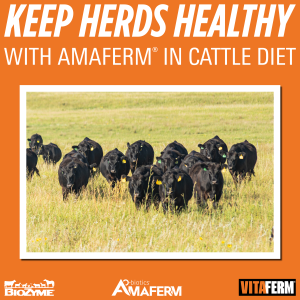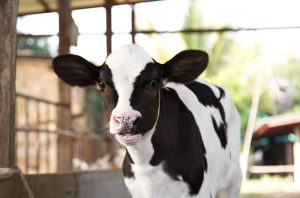
What To Feed Cows
Cow nutritional requirements fluctuate throughout the calendar year and the annual production cycle. Fortunately, cattle producers have a variety of management systems to choose from. They can select calving times, weaning protocols, nutrition programs, and marketing scenarios.
However, when it comes to what to feed cows, the production cycle of the female typically dictates her nutritional needs. Rather than breaking our planner into seasons of the year, we will break down our planner into the production cycle. So, let’s dive into what to feed cows at every stage of production.
The Cattle Production Cycle
According to the experts at the Beef Cattle Research Council, the production cycle can be broken down into four phases:
Phase 1: Days 0-82
- Calving
- Lactation
- Post-partum Interval
Phase 2: Days 83-199
- Lactation Continues
- Conception
- Early Gestation
Phase 3: Days 200-274
- Mid-gestation
- Lowest nutritional requirements of the cow
Phase 4: Days 275-365
- Late Gestation
- Pre-partum
In this blog, the VitaFerm team is going to discuss each phase of production. Specifically, what to feed cows during each phase to optimize reproductive success and increase your return on investment.
What to Feed Cows During Phase 1
Phase 1 is when the cow’s nutritional needs are the highest. She has just given birth and is in lactation. Not only is she raising a calf, providing that newborn with its key nutrients, but she is also preparing for breed back.
Requirements for both energy and protein increase significantly for beef cows after calving. It’s important that producers stay aware of these changing nutrient needs. According to Chris Cassady, Ph.D., Director of Beef Technical Sales for BioZyme® Inc., protein requirements for cows in early lactation reach up to 12%, where they normally don’t exceed 6-8%.
He suggests that lactation is a great time to supplement the herd with VitaFerm® Concept•Aid® Protein Tub or meal.
“Luckily, those added protein requirements typically coincide with spring’s lush pastures. Although protein tubs can help, the extra energy unlocked from Amaferm® really helps bridge the energetic gap, too. Especially when some of the washy forages are low in dry matter,” he said.
The Difference Amaferm Makes
AO-Biotics® Amaferm® is a research-proven prebiotic that enhances digestibility.
“Amaferm can help unlock the nutritional value of all types of forages. Amaferm goes beyond stimulating the growth of beneficial rumen bacteria and can also promote rumen fungal growth and enzymatic activity. This increases fiber digestibility and volatile fatty acid (VFA) production by 17% and 16%, respectively. As such, more energy becomes available to your cows, leading to more performance,” Cassady continued.
We recommend feeding Concept•Aid products powered by Amaferm 60 days pre-calving through 60 days post-breeding to promote effective, easy breeding.
What to Feed Cows During Phase 2
As your herd moves from its post-partum interval to breeding and early gestation, it is important to keep its nutritional level high. This cow is continuing her role in lactation, nursing that growing calf on the ground. This super mama is also about to start developing a new life inside the womb during the first stages of gestation. Although the fetus is small and in the initial stages of growth, the cow still requires protein and energy to sustain herself, her calf at her side, and her growing fetus.
What to Feed Cows During Phase 3
Midgestation represents the lowest nutritional requirement for the cow herd. For spring calving herds, available forage quality decreases at the same rate as cow requirements in a normal year. However, in years with drought conditions, forage quality dwindles at a much more rapid pace.
Phase 3 is probably the best time to put body condition back on your cows. A body condition score (BCS) is a relative term for the amount of energy reserves (i.e. fat) a cow possesses. To evaluate whether or not your cows are in proper body condition, producers can assign them numerical BCS. The most commonly used BCS system is based on a scale from 1 to 9. The thinner the cow, the lower the number; the fatter the cow, the higher the number. An optimal BCS is generally considered to be 5-6.
How Should You Support Your Cows?
Take advantage of the summer forages and a supplementation program when the calves are weaned to bump your cows back up to a BCS of 5 or 5.5 prior to calving. The more adequately conditioned they are, not too fat nor too thin, the easier they will take the calving process, and the more likely they will breed back.
“Supplementation has always been the best method of ‘bridging the gap’ between available forage and nutrient requirements. Its benefits are well understood when supplementing cows and heifers leading up to calving and through rebreeding. Nutrition is still a year-round process, and there are many profitable means of delivering quality nutrition annually,” Cassady said.
Does My Herd Need Supplementation?
If you’re unsure what supplementation your herd needs, there are tools available to better understand their current nutritional environment. Producers should test their grasses, hay, or any type of available forage to get an idea of what they contain nutritionally. BioZyme offers its customers free forage testing to support them and best match their nutritional needs.
“Most producers are surprised at the results, both positive and negative. Providing cattle with a proper supplement that contains adequate minerals is important, as it serves as an insurance policy for seasonal fluctuations in forage quality and can keep cattle from becoming deficient or imbalanced in energy, protein, or mineral status,” Cassady said.
“Deficiencies can sometimes be hard to detect, but later show up in the form of health problems or reduced performance. Either way, providing the cow as well as her developing fetus with proper nutrition can benefit any producer in the long run.”
What to Feed Cows During Phase 4
As the cows enter Phase 4, their nutritional requirements will start to ramp up again. They are in the final stages of gestation, which is when the fetus is being prepared for life outside of the womb. During this time, the calf’s most rapid growth occurs, and the lungs mature, getting it ready for delivery.
For spring calving herds, this is typically a time of year when producers will start looking for a way to cut some expenses. However, those costs shouldn’t be cut in the way of cow nutrition. Fetal development in the final trimester has a significant impact on the future growth and performance of the calf once it is born.
Research has shown that proper nutrition of the fetus during pregnancy has profound impacts on feedlot performance. It also has a positive influence on the overall health and immunity of the calf. All nutrients play a pivotal role in fetal growth and development, but it’s a matter of providing enough of the “right” ones at the “right” time.
VitaFerm Provides Solutions Through all Phases
Regardless of the feedstuffs or forages you feed through the phases, VitaFerm offers a supplement ideal for your cows. Supplementing with pre-mixed minerals, blocks or tubs can help meet cows’ mineral requirements and support their health and productivity. Regular monitoring of mineral levels and consulting with a veterinarian or nutritionist can help ensure cows receive adequate mineral nutrition tailored to their specific needs and production stages.
Vitaferm currently offers two reproduction mineral programs for cattle producers to provide their herds with the vitamins and minerals they need. These programs support cattle regardless of their stage in the production cycle.
VitaFerm® Concept•Aid®
The Concept•Aid products promote effective, easy breeding when fed 60 days pre-calving through 60 days post-breeding. All Concept•Aid products include Amaferm and organic copper, iodine, and zinc for maximum bioavailability, innate immunity, and hoof health. They also contain high levels of Vitamin E to support reproductive tract repair and milk quality.
Concept•Aid products come in numerous loose minerals and two tub formulas. There are formulas that help control anaplasmosis, grass tetany, and flies. Some formulas contain MOS (mannan oligosaccharides) or our HEAT® technology. Some contain a combination of the above.
To discover the Concept•Aid formula best for your management scenario, use our Concept•Aid Navigator.
VitaFerm® ONE
VitaFerm ONE provides one solution to conveniently and consistently promote cattle performance in all seasons. All VitaFerm ONE products contain Amaferm to enhance digestibility. They meet or exceed nutrient requirements throughout the production cycle and are formulated with research-proven organic copper and zinc for enhanced bioavailability.
Several other formulas exist, in addition to the original ONE formula, which offers one solution for all seasons and comes in both loose mineral form and a 35-pound block.
Free-choice mineral formulas also exist to:
- Help control anaplasmosis
- Control flies
- Contain our patented HEAT technology.
BioZyme Products are Research Proven
Amaferm® is the key additive in all VitaFerm products. It has more than 111 published and/or presented research studies proving its increase in digestibility and, ultimately, its impact on the animal.
Providing a high-quality trace mineral and vitamin supplementation like VitaFerm Concept•Aid is research-proven to improve reproductive efficiency. For example, our reproductive success report shows that VitaFerm Concept•Aid has proven itself as an industry leader in fertility support. Its ability to improve pregnancy rates, calving percentages, and weaning weights is unmatched by other brand products.
“Research proves that cattle fed Amaferm synthesize 143 more grams of microbial protein each day. That’s enough protein equivalent to a pound of supplemented soybean meal available for the cow or heifer. This additional protein generated from Amaferm in a year-round supplemental program can help producers reduce their need for additional protein by up to 40% annually, a huge continuous savings on feed costs,” Cassady said.
Get Your VitaFerm Today
Providing the proper vitamins and minerals for cows is paramount to your herd’s success in all phases of production. At BioZyme, we give you options within the VitaFerm line. Not sure what to feed cows when it comes to the VitaFerm line? Check out our Concept•Aid Product Navigator.
Get your VitaFerm products from an authorized BioZyme dealer today. Our extensive dealer network is here to help you meet mineral needs.
Want to learn more about VitaFerm and our other products? Sign up for our electronic newsletter to stay in the know!


